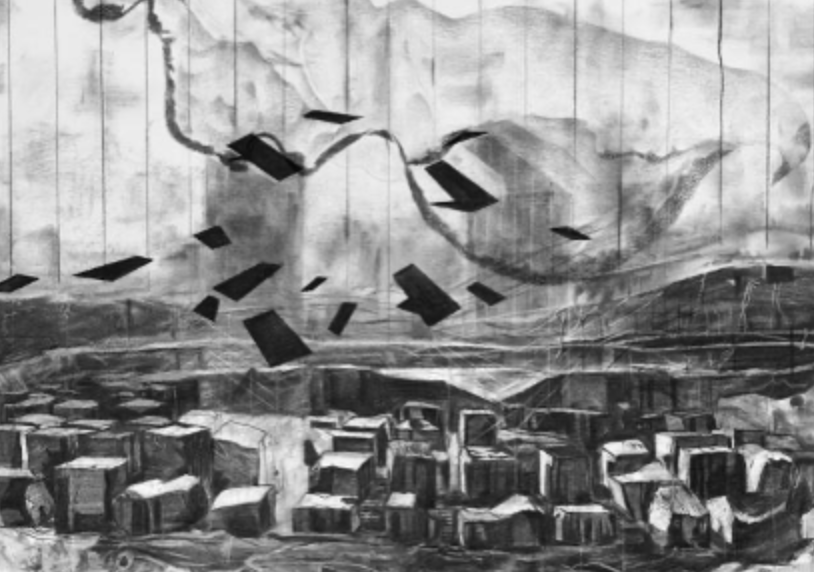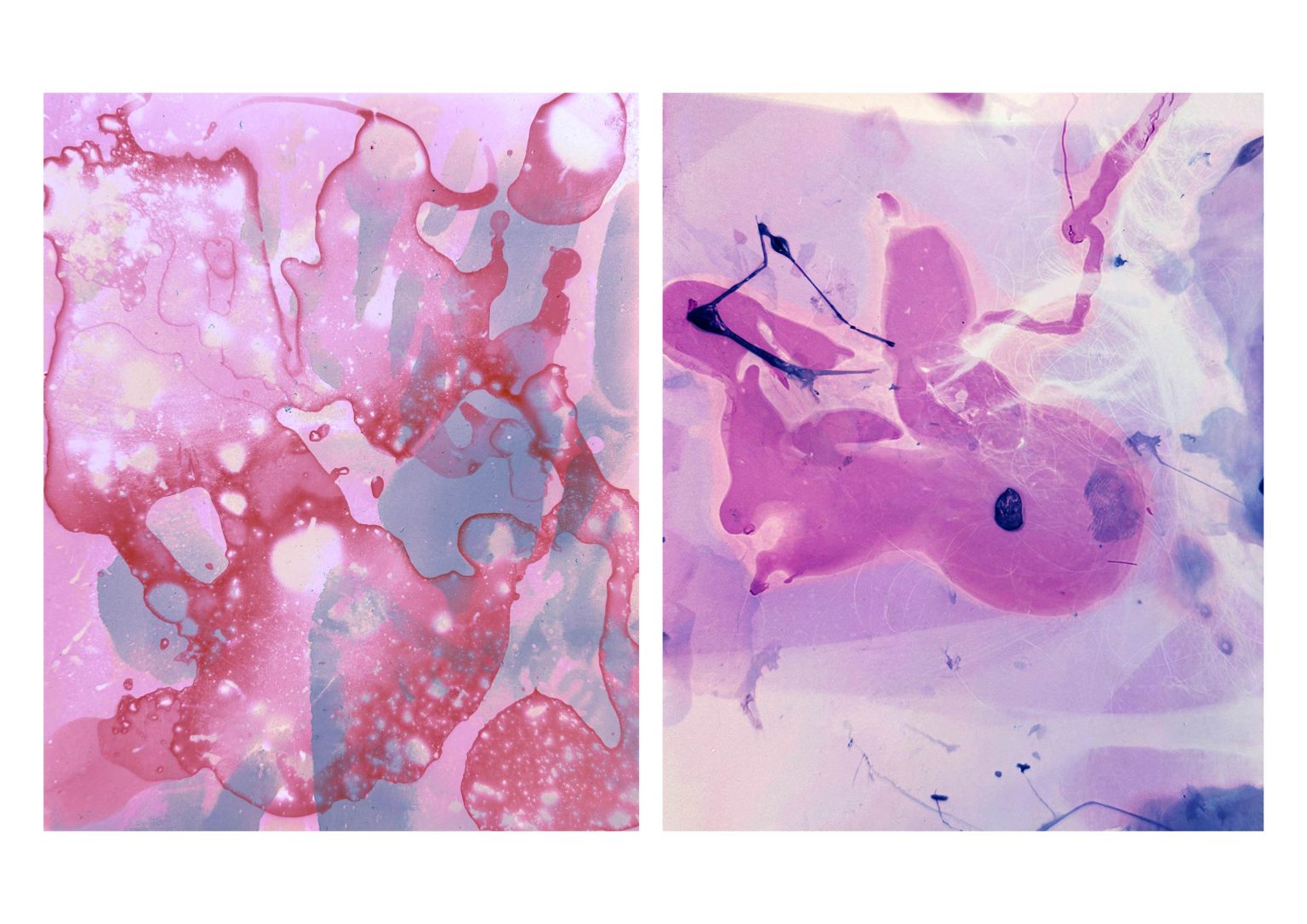Artisic Creation



01
Cycle
Installation
Corn husks, steel bars
2024
This installation is made from corn husks and other plant remnants, representing the
cyclical process of food production—from growth to harvest to decay. The piece rises
from the ground and ultimately returns the remnants to the earth. It reflects Guattari’s
rhizome theory, highlighting the cyclical and nonlinear connections within ecosystems.
Just as rhizomes extend and intertwine underground, the growth and decay of food are
closely tied to the ecosystem, revealing the indispensable relationship between life and
death in nature’s cycle.
02
Transformation
Installation
Orange peel, rebar
2024
The artwork uses the form of orange peels to reflect on how we perceive the production
and consumption of everyday food, as well as how we coexist with the natural
environment. It resonates with Deleuze’s ideas on “becoming” and transformation. The
orange peel, through its growth, ripening, and eventual disposal, creates a cycle between
food and nature. This cycle is captured and displayed in the artwork, reminding viewers
of the transient and unstable nature of this relationship. In the context of globalization
and mass production, a food like an orange, once a symbol of nature’s abundance, has
now become a marker of consumption and waste. The artwork reveals the profound
connection between us and the environment through this transformation of food





03
Development as Destruction
Installation
Bamboo, sheet metal, resin
2024
The metal structures in this piece evoke the erosion of natural landscapes by industrial
forces. The fractured metal, suspended on delicate bamboo poles, symbolizes the
depletion of natural resources in the name of food production and consumption. The lit
candles at the base serve as a vigil for vanishing ecosystems, while also warning of the
future if current industrial practices persist. The bamboo poles, representing resilience,
metaphorically suggest that nature still holds the potential to reclaim its dominance.
Drawing on Baudrillard’s theory of “simulacra,” the shiny metal surfaces symbolize the
illusion of human “progress,” while in reality, they expose the truth of ecological
destruction.
04
living entity
Oil on canvas
Size variable
2023
I attempt to reveal the city as a “fleshly” entity. We are accustomed to viewing cities as cold clusters of buildings and concrete structures, but in reality, a city is like a massive organism with its own complex “physiological structure,” infused with the corporeality brought by human activities. Whether it’s the pulsating traffic, dense buildings, or the ebb and flow of people day and night, every corner of the city breathes, consumes, and renews itself. It bears not only the movement of our bodies but also our emotions, pressures, and memories. The “skin” of the city is marked with traces—these are the imprints of each of our existences within it. Through this figurative presentation, I hope viewers can realize that we do not just live in the city; we inhabit the traces left by each other. Every step, every pause we take, adds to the city’s “flesh,” transforming it into a truly living.



05
Displacement of Food Systems
Charcoal and watercolor on paper
20x30cm
2024
This piece features vibrant abstract patterns surrounding a central figure, representing the conflicts and intersections of food, culture, and ecology in the process of globalization. It reflects the expansion of global food systems, leading to the homogenization of diets and the loss of traditional ecological knowledge. The chaotic composition symbolizes the fluidity of boundaries and identities, as food systems become increasingly detached from local environments, resulting in ecological imbalance. The work poses a question to the audience: are we sustainers or destroyers within the global food chain?
06
The Oppressive Weight of Mass Consumption
Charcoal on paper
20x30cm
2024
In this piece, a fractured head appears submerged under industrial and agricultural structures, symbolizing the oppressive weight of mass consumption on both individuals and the environment. The surreal depiction of industrialized food production highlights the immense pressure that global food systems exert on the natural world—vast quantities of food are processed, transported, and consumed. While technology has driven agricultural advancements, it also reveals a growing disconnect between humanity and nature, distancing us from the natural origins of our food.


07
interventions
Charcoal on paper
20x30cm
2024
I aim to depict how human activities invisibly intervene and shape the structure and ecology of the city. The black squares floating in the air resemble countless “interventions” within the city—these could be buildings, industrial facilities, or even the daily information and traces we generate. They continuously flow in, overlap, and disrupt the natural balance, layering new dimensions upon the city. It’s as if the city itself is breathing yet unable to escape from this man-made constraint.
08
Video
Size variable
2024
I attempt to explore a microscopic vision of organic life, touching upon the vitality and rhythm of growth through the deconstruction and reassembly of forms. The radiating shapes presented here seem like primitive organisms or the moments of cell division and expansion under a microscope. These shapes resemble both the connections between cells and the flow of energy, carrying a sense of organic life and an unknown force. I hope viewers can find a resonance with life within these forms, experiencing the grandeur within the microscopic world. As French philosopher Gilles Deleuze once said, life itself is a process of becoming, continuously dividing, transforming, and regenerating.

09
entity
Size variable
2024
Lumen photography is a technique that involves placing objects directly onto photosensitive paper, where exposure to light and chemical reactions create unexpected visual effects. I arranged fluid foods—such as porridge, ketchup, and cereal—on the film. They spread, seep, and blend spontaneously, forming organic, uncontrolled textures that resemble microscopic landscapes of nature or nebulas in the cosmos. This method allows me to interact directly with materials, experiencing an intimate dialogue between light and matter. In this process, light becomes not only a recording tool but also a medium of creation, even a “collaborator.” The flow of colors and textures acts as an extension of the senses, enabling us to visually touch a quality that transcends the physical.
10
Face Mask
Oil on canvas
60×60 cm
2023b


11
Still Life
Oil on canvas
60×80 cm
2023
12
Still Life Pencil on paper
12×24 cm
2022


13
Eye of the Creature — Tiger Digital drawing
Size variable
2022
I am captivated by the diversity of life in nature and the complexity of ecosystems. Through this artwork, I hope to express a “biological gaze”—as if observing humanity from the perspective of nature, reflecting on our impact on the environment. The tiger’s gaze is both gentle and slightly wary, hinting at the threat posed by human exploitation of natural resources. I want viewers to feel the rhythm and harmony of natural life and to recognize the consequences of our disruption of this balance. This painting is an expression of my reverence for nature and a contemplation on the relationship between humans and the natural world.
将 {{itemName}} 添加到购物车
已将 {{itemName}} 添加到购物车

